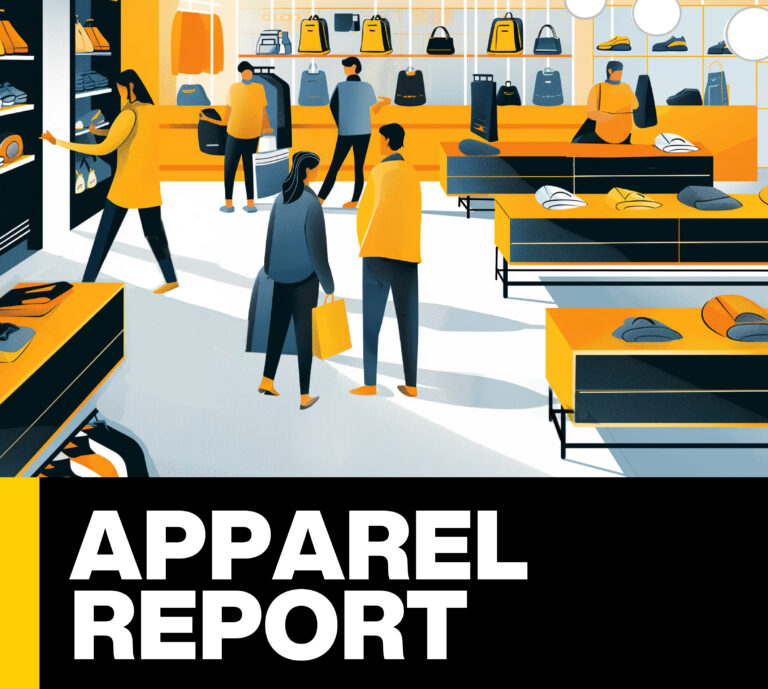×

There’s a growing gap in beauty retail that most brands don’t see coming. Our Director of Strategy, Alexa Jewell Schaefer, shares more in VMSD.

Returning to an in-person event for the first time since 2020, NRF’s Big Show brought a renewed sense of optimism and excitement for what’s still to come in retail. While some speakers reflected on how the retail landscape has drastically evolved over the past two years, the overwhelming consensus was that technology’s integration in retail has only just scratched the surface for most companies. The show may have looked a bit different this year, but the conversations with industry leaders were as impactful as ever before. Here are some of our key takeaways from the event:
1. Entering the Metaverse
Metaverse was the big buzzword surrounding the NRF show this year – speaker sessions headlining the topic were some of the most well-attended of the event as brands, retailers, and vendors alike sought to better understand what exactly “is” the metaverse, how (and why) will consumers interact with it, and what does it look like for brands and retailers to connect with their customers in another realm?
One thing’s for certain; there are a lot of mixed ideas and visions of what the metaverse will be. At its most basic level, some consider popular online video games like Fortnite or Roblox to be metaverses; you exist as an avatar in a virtual world and can interact with others around the globe. A more forward-thinking take on metaverses is the recreation of our physical world in a digital landscape – people can (and will) live separate lives in virtual reality. The metaverse will allow you to own virtual real estate, brands will operate virtual storefronts with virtual staff, and employees will visit virtual offices for meetings with colleagues. While still too early to understand exactly how a metaverse will manifest itself as part of our day-to-day lives, the technology has many in the retail space excited for the possibilities it can unlock in the future.
What could the virtual version of a retailer’s storefront look like in the metaverse? Are there opportunities to leverage a virtual store to sell real-world products to customers, entirely from the comfort of their homes? How could a brand engage with metaverse users through memorable and deeply immersive experiences? The metaverse presents an exciting yet uncertain frontier for brands and retailers to explore.
2. Designing experiences that serve
In an insightful keynote conversation, Best Buy CEO, Corie Barry, discussed the ways in which they’ve responded to the ever-evolving expectations of consumers. While some are looking for convenience and speed, others are more eager to take their time for in-person service and want to develop a relationship with the brand. Barry stressed that the needs of both need to be considered, and experiences must be designed to seamlessly support either path.
For years, successful omnichannel strategies have been defined by creating purely frictionless experiences, achieved through the creation of a multitude of customer journey paths. Nowadays, it’s increasingly important to take a more measured approach and retailers must carefully consider what convenience means for their specific customer and their respective needs. Do your customers want a purely transactional experience, or is there a desire for a more meaningful connection?
3. Technology is not an expense, it’s a force multiplier
New to the NRF show floor this year was the Food Service Technology Pavilion, which showcased engaging talks from technology leaders in the industry.
Rob Grimes, President of the International Food & Beverage Technology Association, remarked that in a good economy, companies are eager to invest in technology to help further develop their business. In a bad economy, technology is looked at through the lens of cost reduction. The pandemic – for better or worse – has thrown that logic out the window and blended the two agendas together. Today, technology must be able to deliver a return on investment while also delivering incremental experiential value.
John Meister, Chief Information Officer for Panera Bread, shared that their automation of service recovery through their mobile app has benefited Panera by freeing up resources at their customer contact centers while also converting a negative experience into an opportunity for the guest to revisit. Meister spoke about Panera’s focus on accelerating guest return visits through technology – a truly customer-obsessed mentality that has relevance across the industry. How can others in retail learn from this approach and use technology as the basis to drive their business to the next level?
4. Gen Z and the rise of social commerce
Move over millennials, Gen Z is now the hot topic of conversation. Representing over 35% of the world population today, Gen Z grew up “digitally native” – the iPhone was released before they were teenagers, they search for inspiration on social media, and their spending power will exceed millennials and boomers within the next 10 years.
Social shopping adoption accelerated during the pandemic, but it’s here to stay. In China, over $21 billion was spent on shopping through TikTok alone last year, and social commerce sales topped an estimated $36 billion in the US. Despite this, there remains a deep desire among consumers of all ages for product engagement in physical stores. There are a variety of achievable opportunities retailers can pursue today to bridge the gap between online social commerce and in-store experiences. For instance, retailers can leverage the deep product knowledge and personal touch of store staff to build local influence through in-store virtual shopping platforms. There are also tremendous use-cases for user-generated social content to enhance in-person buying decisions.
The NRF show provided a much-needed opportunity for retailers to take a step back and consider all the progress that has been made to better serve customers in an ever-changing landscape. Yet it also served as a reminder that retail is never stagnant, and there are innovative solutions that continue to set the course for the future of the industry.


